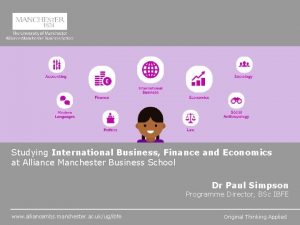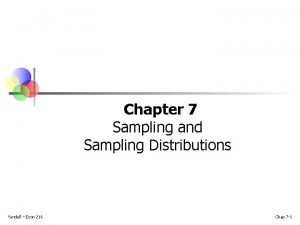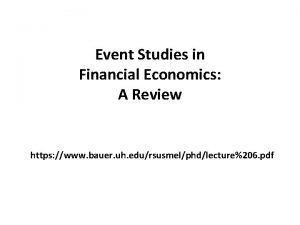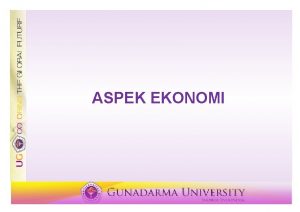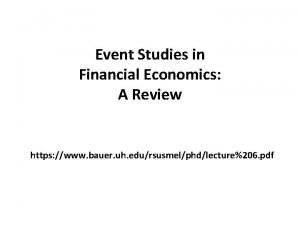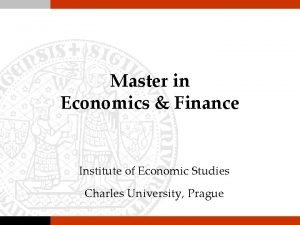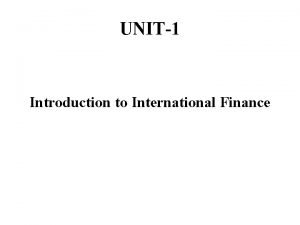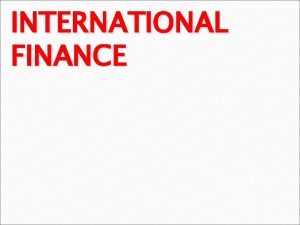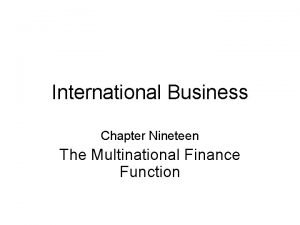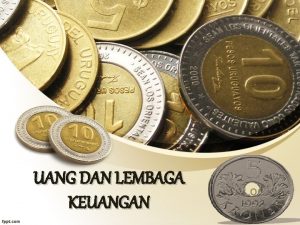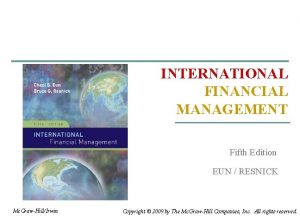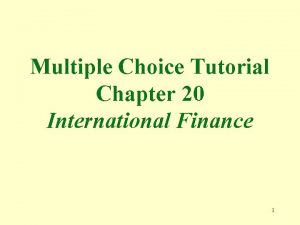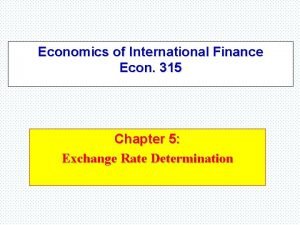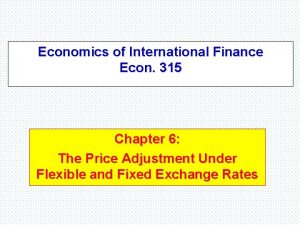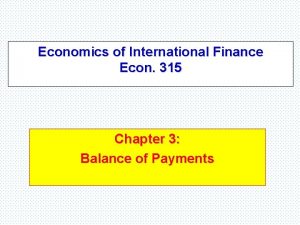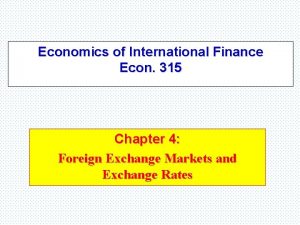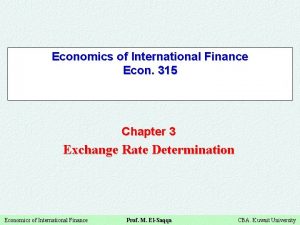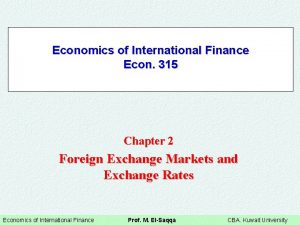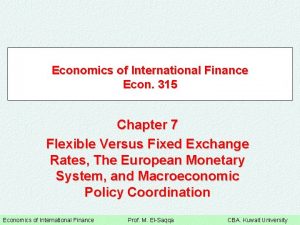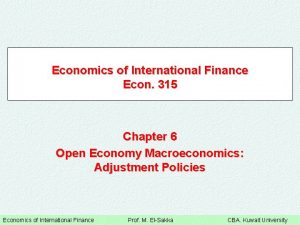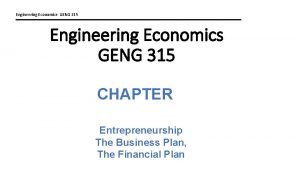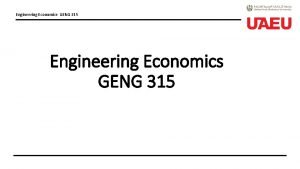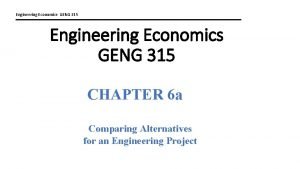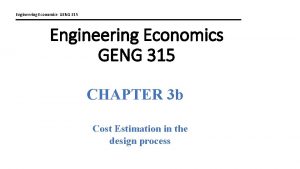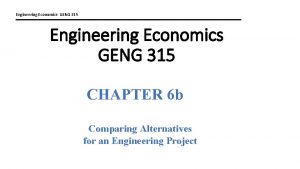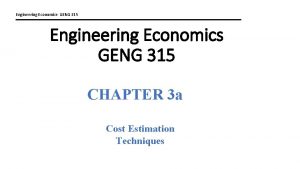Economics of International Finance Econ 315 Chapter 2
















- Slides: 16

Economics of International Finance Econ. 315 Chapter 2: International Monetary Fund (IMF)

What is the IMF? • An international organization of 189 member countries. • The IMF is located in Washington DC. • It was established to promote international monetary cooperation, exchange rates stability.

History of IMF Creation • As the consequence of the World War Two, three international institutions were established.

Ø Debt

Ø Inflation Ø Unemployment

• The IMF was conceived in July 1944, when representatives of 45 governments meeting in the town of Bretton Woods, New Hampshire, in the north-eastern United States,

Objectives of IMF • Fostering economic growth, • Promoting high levels of employment, • Securing financial stability, • Facilitating international trade,

Who controls the IMF ? § The Fulfillment of daily IMF's work is done by the Executive Board, composed of 24 directors, headed by the Director General. § In separate seats in the Executive Board, the big five countries (United States, Japan, Germany, France, the United Kingdom) as well as China, Russia and Saudi Arabia. § However, the other directors (16 directors) are elected every two years.


Sources of the IMF • Upon joining, each member of the IMF is assigned a quota, based broadly on the country’s relative size in the world economy. • The IMF can be thought of as a global credit union in which countries’ shares are determined by their quotas. • Quotas determine both the amount members can borrow from the IMF and their voting power within the IMF

Sources of the IMF • A 25% of a member’s quota is held in a reserve currency: US dollar, British pound, euro, yen or IMF special drawing right (SDR) • A 75% of the quota is held in a members own currency.

Special Drawing Rights (SDR) • The SDR is an international reserve currency, created by the IMF in 1969 to supplement its member countries’ official reserves. Its value is calculated through a basket of currencies.

• Last September 2016, IMF added Chinese Renminbi to Special Drawing Rights Basket.

The Role of IMF 1) Surveillance • Policy advice to members (governments & central banks) based on economic trends. • Proving research, statistics, forecasts, and analysis to members. • Focusing on assessing whether countries' policies promote external stability. • IMF has provided 130 consultations in 2013 and 132 in 2014, and 124 in 2015

2) Lending • IMF lending enables countries to rebuild their international reserves; stabilize their currencies; continue paying for imports; & restore conditions for strong economic growth (no lend for specific projects). • It eases the adjustment policies and reforms that a country must make to correct its balance of payments problem and restore conditions for strong economic growth. • Biggest borrowers (as of August 2016): Portugal, Greece, Ukraine, Pakistan

3) Technical assistance • It supports the development of the productive resources of member countries by helping them to effectively manage their economic policy and financial affairs. • About 90 percent of IMF technical assistance goes to low and lower-middle income countries, particularly in sub-Saharan Africa and Asia.
 Ibfe
Ibfe Econ chapter 7
Econ chapter 7 Event studies in economics and finance
Event studies in economics and finance Perbedaan aspek ekonomi dan aspek keuangan
Perbedaan aspek ekonomi dan aspek keuangan Event studies in economics and finance
Event studies in economics and finance Central university of finance and economics
Central university of finance and economics Charles university master of economics and finance
Charles university master of economics and finance School of business and economics maastricht
School of business and economics maastricht Mathematical economics vs non mathematical economics
Mathematical economics vs non mathematical economics International finance syllabus
International finance syllabus Ifslearning
Ifslearning Nature of international finance
Nature of international finance Finance function of international business
Finance function of international business Logo lembaga keuangan
Logo lembaga keuangan Goals for international financial management
Goals for international financial management The current system of international finance is a *
The current system of international finance is a * Multinational financial system
Multinational financial system
